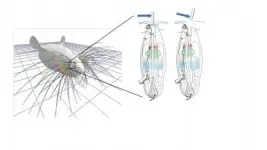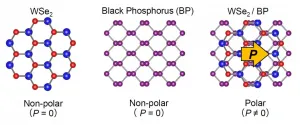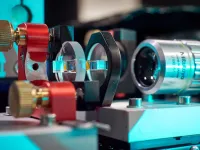Improving equity in the physics of medical devices
UCLA electrical engineer featured in the journal Science on ways to address issues of fairness
2021-04-01
(Press-News.org) Achuta Kadambi, an assistant professor at the UCLA Samueli School of Engineering, published a column in the journal Science about how medical devices can be fundamentally biased -- not just in dataset representation as has been widely reported, but from a deeper root: the laws of physics.
Kadambi described how the inherent physics behind medical devices could vary across race and gender. He cited several examples of potential physics-based bias. For example, recent research has shown that a pulse oximeter -- a medical device typically placed on a fingertip that uses infrared and light beams to measure oxygen saturation of the blood and the pulse rate -- is more likely to miss low levels in people with darker skin.
What motivated Kadambi to write this piece stemmed from an incident at an airport when he noticed he had difficulties triggering light-sensing soap, faucet and towel dispensers, which he attributed to his darker complexion and the physics of light. While these factors might result in mere inconvenience when using a light-sensing faucet or towel dispenser, Kadambi said they might present life-threatening consequences in critical application domains such as medicine.
To address these challenges, Kadambi offered a few suggestions on how to prevent these unintentional biases and improve equity in medical devices. For starters, he suggested that medical devices journals require authors to quantify sample fairness in experiments. At present, scientists are only required to provide statistics relating to the performance of a device without the human factor.
Another critical point raised by Kadambi in this piece involves recalibrating how a medical device's performance is measured. In such a scenario, the performance rating of existing medical devices may suffer when a quantifiable metric, such as race or ethnicity of a population, is included in evaluating the equipment. This is a concept similar to the Pareto efficiency in economics, whereby when enhancement made to benefit one metric (e.g. fairness) leads to diminution on another (e.g. device performance on the majority). If a life-saving medical device does not work well on minority populations, should it be redesigned at the expense of the majority? Kadambi noted that society historically has had great difficulties in solving such a conundrum.
Kadambi, who specializes in computational-imaging technologies and their applications, has recently pivoted his research to explore the issue of fairness in the imaging field. A recent National Science Foundation CAREER Award will fund his research into the physics of light and how it interacts with variations in skin types and colors.
INFORMATION:
After receiving his Ph.D. from the Massachusetts Institute of Technology (MIT Kadambi joined UCLA in 2018 and holds faculty appointments in both the electrical and computer engineering department and the computer science department. Over the years, he has received many honors and awards, including a Lemelson-MIT student prize and a Google Faculty Award. He was elected as a senior member of the 2020 National Academy of Inventors and named one of Forbes' 30 Under 30 class of 2019 (science category). He is also the co-founder and chief scientist for Akasha Imaging, a venture-backed startup that designs camera hardware and artificial intelligence to enhance computer vision.
UCLA Samueli is a tightly knit community of 190 full-time faculty members, more than 6,000 undergraduate and graduate students, as well as 40,000 active alumni. Known as the birthplace of the internet, UCLA Samueli is also where countless other fields took some of their first steps - from artificial intelligence to reverse osmosis, from mobile communications to human prosthetics. UCLA Samueli is consistently ranked in the Top 10 among U.S. public engineering schools. The school is ranked No.1 public university (No. 2 in 2021 overall) for its online master's program by U.S. News & World Report.
ELSE PRESS RELEASES FROM THIS DATE:
2021-04-01
A group of scientists from the University of Koblenz-Landau, Germany, has shown that for plants and insects the applied pesticide toxicity in agriculture has substantially increased between 2004 and 2016. In a paper published in the current issue of Science, the authors show that this pattern is even relevant in genetically modified (GM) crops that were originally designed to reduce pesticide impacts on the environment.
"We have taken a large body of pesticide use data from the US and have expressed changes of amounts applied in agriculture over time as changes in total applied pesticide toxicity," says lead author Ralf Schulz, professor for environmental sciences in Landau. "This provides a new view on the potential ...
2021-04-01
We know your cat's whiskers are handsome -- but you can't even see the cool part.
The base of the whisker, which is responsible for sending touch signals to the brain, is hidden inside the follicle, a deep pocket that embeds the whisker within the skin. Because this section of the whisker is obscured, understanding precisely how whiskers communicate touch to the brain has been a longstanding mystery.
In a new study, an interdisciplinary team of researchers at Northwestern University has developed the first mechanical simulation of the whisker inside the follicle. By combining their new model with new anatomical observations, the researchers discovered that when whiskers touch an object, they ...
2021-04-01
For the first time, researchers have discovered a way to obtain polarity and photovoltaic behavior from certain nonphotovoltaic, atomically flat (2D) materials. The key lies in the special way in which the materials are arranged. The resulting effect is different from, and potentially superior to, the photovoltaic effect commonly found in solar cells.
Solar power is considered a key technology in the move away from fossil fuels. Researchers continually innovate more efficient means to generate solar energy. And many of these innovations come from the world of materials research. ...
2021-04-01
Despite a reduction in the total amounts of pesticides used, the toxicity of commonly used pesticides to nontarget species, partially aquatic invertebrates and pollinators, has increased considerably in recent decades, according to a new study analyzing 25 years of pesticide use. This has been driven by the widespread use of highly toxic pyrethroid and neonicotinoid pesticides. The findings challenge claims suggesting that the overall environmental impacts of pesticide use have declined. The impacts of applied pesticides on humans and the environment are often based on comparisons of use rates (e.g., kilograms per hectare) or the total amounts used (e.g., kilograms per year). However, from an environmental perspective, these weight-based ...
2021-04-01
Technology can be biased, and its design can disadvantage certain demographic groups. While efforts to address bias and promote fairness in technologies are rapidly growing in a variety of technical disciplines, Achuta Kadambi argues that similar growth is not occurring fast enough for medical engineering. "Although computer science companies terminate lucrative but biased facial recognition systems, biased medical devices continue to be sold as commercial products," writes Kadambi in a Perspective. Bias in medical devices results in undesirable performance variation across demographic groups and can greatly influence health inequality. For example, optical biosensors that use light to monitor vital signs like blood oxygenation ...
2021-04-01
In an analysis of thousands of fossil pollen and leaves spanning the Cretaceous-Paleogene (K/Pg) boundary, researchers found that the cataclysmic asteroid impact that resulted in the destruction of nearly 75% of all terrestrial life on Earth drastically restructured tropical forests, setting the stage for the evolution of what has become one of the planet's most diverse ecosystems - the neotropical rainforest. While the end-Cretaceous impact nearly 66 million years ago was catastrophic for terrestrial ecosystems worldwide, its long-term effects on tropical forests have remained a mystery. This is largely due to the lack of palaeobotanical exploration in the region, which has only just begun to provide ...
2021-04-01
An increase of dopamine in the brain's striatum triggers auditory hallucination-like experiences in mice, revealing a possible causal role for dopamine-dependent neurological circuits in symptoms of psychosis. These findings from a new study could inform novel targeted approaches to treating those with psychotic disorders, like schizophrenia. Auditory and visual hallucinations - perceptions of hearing or seeing something without observing external sensory stimuli - are central symptoms of psychotic disorders and are thought by some to be caused by excessive dopamine ...
2021-04-01
A single "super photon" made up of many thousands of individual light particles: About ten years ago, researchers at the University of Bonn produced such an extreme aggregate state for the first time and presented a completely new light source. The state is called optical Bose-Einstein condensate and has captivated many physicists ever since, because this exotic world of light particles is home to its very own physical phenomena. Researchers led by Prof. Dr. Martin Weitz, who discovered the super photon, and theoretical physicist Prof. Dr. Johann Kroha have returned from their latest "expedition" into the quantum world with a very special observation. They report of a new, previously ...
2021-04-01
(Santa Barbara, Calif.) -- Despite the fact that our planet is mostly ocean and human maritime activity is more intense than it has ever been, we know remarkably little about the state of the ocean's biodiversity -- the variety and balance of species that support healthy and productive ecosystems. And it's no surprise -- marine biodiversity is complex, human impacts are uneven, and species respond differently to different stressors.
"It is really hard to know how a species is doing by just looking out from your local coast, or dipping underwater on SCUBA," said Ben Halpern, a marine ecologist at the Bren School of Environmental Science & Management at UC Santa ...
2021-04-01
The humble lab mouse has provided invaluable clues to understanding diseases ranging from cancer to diabetes to COVID-19. But when it comes to psychiatric conditions, the lab mouse has been sidelined, its rodent mind considered too different from that of humans to provide much insight into mental illness.
A new study, however, shows there are important links between human and mouse minds in how they function -- and malfunction. Researchers at Washington University School of Medicine in St. Louis devised a rigorous approach to study how hallucinations are produced in the brain, providing a promising entry point to the development of much-needed new therapies for schizophrenia.
The study, published April 2 in ...
LAST 30 PRESS RELEASES:
[Press-News.org] Improving equity in the physics of medical devices
UCLA electrical engineer featured in the journal Science on ways to address issues of fairness




